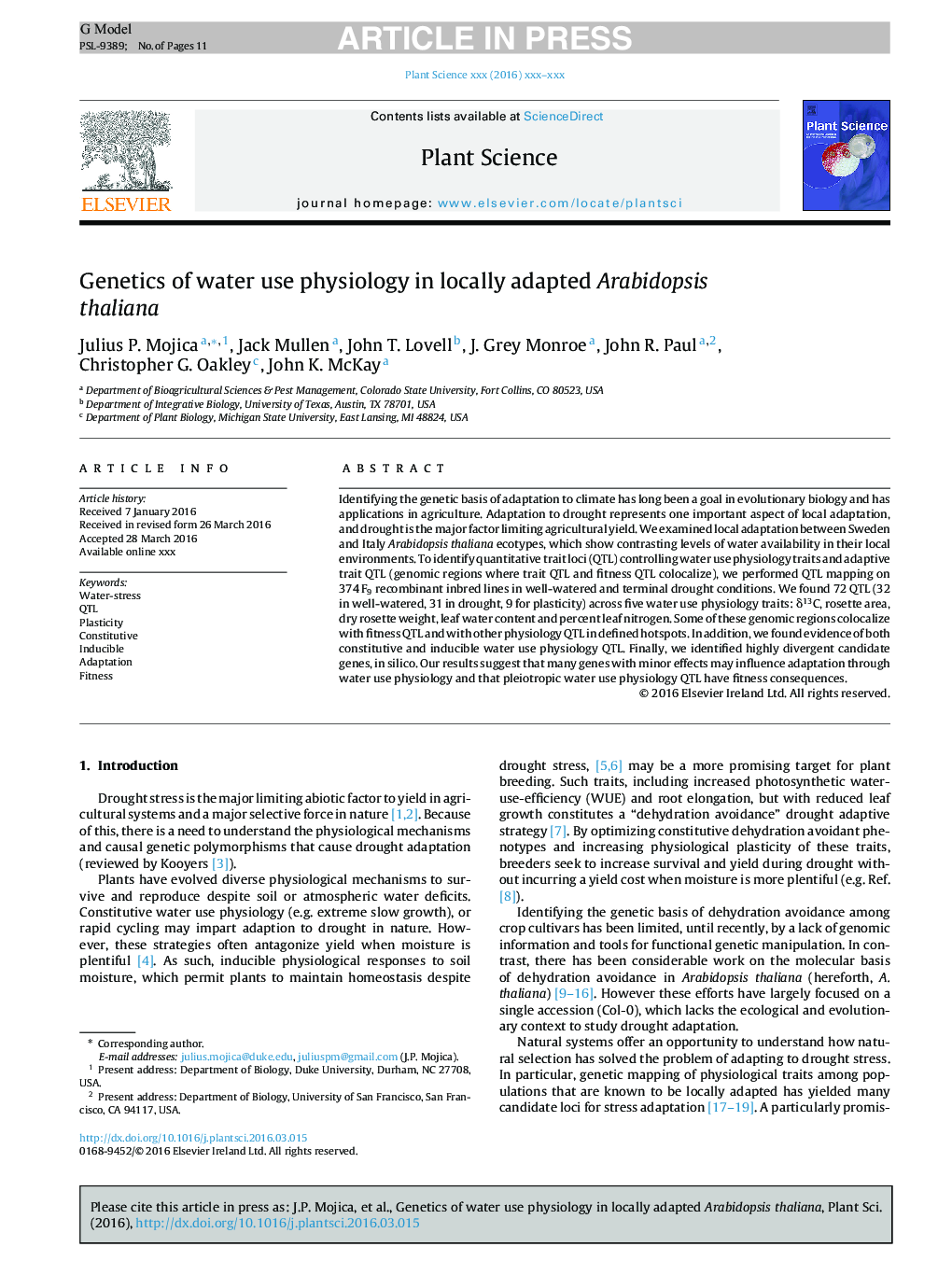| Article ID | Journal | Published Year | Pages | File Type |
|---|---|---|---|---|
| 8357114 | Plant Science | 2016 | 11 Pages |
Abstract
Identifying the genetic basis of adaptation to climate has long been a goal in evolutionary biology and has applications in agriculture. Adaptation to drought represents one important aspect of local adaptation, and drought is the major factor limiting agricultural yield. We examined local adaptation between Sweden and Italy Arabidopsis thaliana ecotypes, which show contrasting levels of water availability in their local environments. To identify quantitative trait loci (QTL) controlling water use physiology traits and adaptive trait QTL (genomic regions where trait QTL and fitness QTL colocalize), we performed QTL mapping on 374 F9 recombinant inbred lines in well-watered and terminal drought conditions. We found 72 QTL (32 in well-watered, 31 in drought, 9 for plasticity) across five water use physiology traits: δ13C, rosette area, dry rosette weight, leaf water content and percent leaf nitrogen. Some of these genomic regions colocalize with fitness QTL and with other physiology QTL in defined hotspots. In addition, we found evidence of both constitutive and inducible water use physiology QTL. Finally, we identified highly divergent candidate genes, in silico. Our results suggest that many genes with minor effects may influence adaptation through water use physiology and that pleiotropic water use physiology QTL have fitness consequences.
Related Topics
Life Sciences
Agricultural and Biological Sciences
Plant Science
Authors
Julius P. Mojica, Jack Mullen, John T. Lovell, J. Grey Monroe, John R. Paul, Christopher G. Oakley, John K. McKay,
